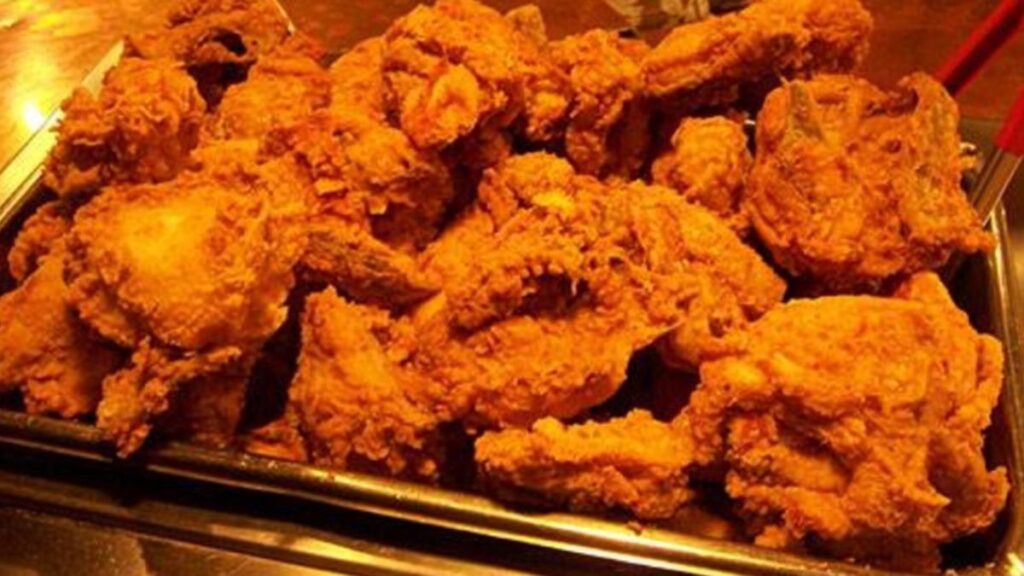When the late-night cravings hit and the neon signs buzz in boroughs from Harlem to Philadelphia, one name echoes through the streets: Kennedy Fried Chicken. More than just an alternative to the Colonel’s empire, this no-frills, cash-only sanctuary has become a cultural mainstay—a testament to the power of simplicity, grit, and the eternal siren call of crispy poultry. In this deep dive, we unpack the legend, the layers, and the unapologetic crunch that keeps fans coming back for more.
Origins in the Concrete Jungle
In the kaleidoscopic mosaic of New York City’s fast-food landscape, Kennedy Fried Chicken emerged in the late 1960s as an insurgent against the burgeoning glory of KFC. While Blue Ridge Farms supplied the first flocks, enterprising entrepreneurs—many immigrants carving out American dreams—seeded small, independently owned shops in Harlem, the Bronx, and Brooklyn. Unlike a traditional franchise model, these early operators shared a name and a fryer recipe but little else: no corporate overlord, no global marketing blitz, just high-heat cookers, chalkboard menus, and the whispered promise of a pliable, peppery crust hugging juicy white meat.
That rough-and-ready origin story cemented Kennedy Fried Chicken’s DNA: a network of mom-and-pop joints that answered to local owners, local tastes, and local hours. From day one, you didn’t need to flash a credit card; Kennedy thrived on cash, cheap eats, and the rumor that “everybody knows” where the real talk happens. The result? A patchwork empire bound by loyalty to the golden bird and the tireless urban grind.
The Menu Mania
Step inside any Kennedy Fried Chicken outpost and you’re greeted by a fluorescent-lit board listing fried chicken—of course—but also fish, wings, fries, burgers, hot dogs, and even kebabs in some locales. It’s a carnival of comfort food dressed up in vinyl booths and chain-smoking neon. The core superstar remains the half-chicken combo: two succulent pieces, smothered in secret-seasoning, served with a side of crinkle-cut fries and a squirt of ketchup or hot sauce, all for under ten dollars.
Yet the genius lies in versatility. Late-night party? Grab the snack box (a half-pound of tenders plus slaw). Got a crew streaming in from the bar? Order buckets—nine, twelve, or even twenty pieces—stacked high in waxed cardboard. For those craving seafood, the breaded whiting fillets pair shockingly well with crisp fries. And if the name Kennedy suggests anything, it’s diplomacy: vegetarian? Go for onion rings and mozzarella sticks. Sweet tooth? The soft-serve ice cream machine hums until the lights go out.
Neighborhood Iconography
Across the East Coast corridor—from Jersey City’s girth of subways to downtown D.C.’s cherry-blossom whispers—Kennedy Fried Chicken shops stake their turf in working-class enclaves. These are spots where taxi drivers, students, retail workers, and insomniacs mingle in a flavorful détente. There’s no velvet rope, no waiting staff in bow ties—just a countertop, a fryer, and local banter flying faster than the chicken lands on the paper plate.
In neighborhoods where national chains feel distant or sanitized, Kennedy stands as an affirmation of authenticity. The brand identity is less about a polished logo and more about the communal humming of the kitchen ventilator, the family-run pride plastered on glass doors, and the unspoken pact that “we all eat here.” Street art sometimes coexists on the windows: stylized chickens in graffiti, political slogans next to menu flyers, and seasonal posters—from Ramadan to Juneteenth—taped to the front.
The Franchise Enigma
Unlike the regimented, corporate-clad corridors of KFC, Kennedy Fried Chicken is a free-for-all. There’s no single headquarters issuing memos; instead, small-business owners—often with roots in Pakistan, Bangladesh, or West Africa—purchase their equipment, tweak the marinade ratios, and charter their own destinies. This decentralized patchwork makes it nearly impossible to map a definitive family tree. Some shops even operate under sibling names—Kennedy Grill Chicken, Kennedy Chicken & Burgers, Kennedy Spicy Wings—yet the signature “KFC” acronym remains an irresistible echo.
The upside? Immeasurable local flavor and entrepreneurial agility. The downside? Inconsistent quality. Diner A down the block might slay with perfectly seasoned thighs; Diner B four blocks away could serve limp fries and greasy breading. Yet patrons, ever the optimists, learn to navigate by whispered recommendations: “Go to the one on 125th; they’re legendary.”
Competing with the Colonel
Facing off against Colonel Sanders’ empire—and a marketing budget that dwarfs even some city boroughs—might seem quixotic. Yet Kennedy Fried Chicken thrives in a different arena: accessibility, price point, and community ties. A value meal at Kennedy undercuts KFC by several dollars. Kennedy’s shops are scattered in places where KFC often hesitates to place a corporate outlet: the fringe storefront, the gritty corner near the el tracks, the part of town where SDS’s white dress code just doesn’t resonate.
Moreover, Kennedy’s independence fuels its authenticity. While the Colonel churns out glossy commercials with chicken sandwiches emblazoned in slow-motion glory, Kennedy’s allure hinges on word-of-mouth: “Have you tried the spicy wings at Kennedy on Lexington?” No polished influencer needed—just friends convincing friends, one crispy bite at a time.
Halal and Beyond
A subtle yet seismic shift occurred when many Kennedy Fried Chicken locations began offering halal-certified poultry. For New York’s vast Muslim community, this wasn’t a mere menu tweak; it was an invitation. Orders come with earnest assurances that the chicken adheres to Islamic dietary laws, providing a sense of inclusion often missing in mainstream fast food. Soon, Kennedy’s halal options outpaced many halal-dedicated restaurants in price and speed.
This pivot also broadened Kennedy’s appeal—families celebrating Eid could pick up party trays, college students fasting during Ramadan found a go-to iftar spot, and halal-curious eaters experienced a cultural crossover. It underscored Kennedy’s most potent asset: adaptability. No corporate committee meeting needed—if franchise owner Ali spots demand, he simply applies for certification and adjusts his spice blend.
Cultural Phenomenon
Ordering from Kennedy Fried Chicken is more than a transaction; it’s a ritual threaded into the urban tapestry. Rap lyrics nod to late-night runs for Kennedy buckets. TikTok foodies deconstruct the perfect fry-dip ratio. Local blogs crown “The Best Kennedy Spots” in annual polls. The brand’s raw edges—its neon signs, cash-only registers, wobbly chairs—conjure a nostalgia for an era when “fast” trumped “fancy,” and affordability spelled freedom.
This cultural penetration stems from Kennedy’s alignment with city rhythms. It doesn’t matter if you hail from Harlem, Newark, or Roxbury: midnight hunger is a universal dialect, and Kennedy is its first conversation. For gig workers racing the clock, it’s a lifeline. For partygoers streaming from club to street, it’s the sunrise denouement. And for families on a budget, Kennedy’s dinner combo is a small luxury in a world of overpriced takeout.
Challenges and Controversies
Yet not all that glitters is chicken skin. The absence of centralized oversight has opened the door to health-code violations, uneven service, and occasional supply-chain snafus. A handful of Kennedy outlets have drawn fire from local officials for high bacteria counts or inhumane storage practices. Rumors swirl—some justified, others hyperbolic—about questionable oil changes or cost-cutting on portions.
Then there’s the branding labyrinth. Customers often conflate Kennedy Fried Chicken with Crown Fried Chicken, leading to turf wars over legal use of initials or similar signage. Trademark attorneys have occasionally drawn swords, though most disputes are settled with polite rebranding: Kennedy’s Grillhouse here, Kennedy’s Chicken & Pizza there. Still, these skirmishes underscore the risk inherent in a franchise model without ironclad contracts or rigorous brand guidelines.
Innovations Frying Ahead
Despite bumps in the road, Kennedy Fried Chicken isn’t standing still. Some enterprising owners have rolled out digital ordering apps, and a few pilot curbside pickup zones to minimize line anxiety. A couple of visionaries in Boston have trialed plant-based chicken alternatives alongside the traditional recipe—an audacious nod to the flexitarian wave. The verdict remains mixed, but the very fact that Kennedy is experimenting speaks volumes about its survival instinct.
On the tech end, one Manhattan location installed a self-order kiosk last year—a glimmer of Silicon Alley meets greasy fingers. Another in D.C. began accepting digital wallets alongside cash, recognizing that younger patrons prize convenience. These efforts illustrate a delicate balancing act: embrace modernization without losing the heartbeat of authenticity that made Kennedy Fried Chicken beloved in the first place.
The People Behind the Counter
Make no mistake: the true magic of Kennedy Fried Chicken is human. The workhorses behind the counter—immigrants chasing a vision of prosperity, multi-generational family partnerships, college students hustling for extra cash—all contribute to the brand’s soul. Each shift echoes with stories: “My dad started this shop after landing in Queens,” or “I learned the fry recipe from my uncle back in Pakistan.”
This human tapestry also fuels the mood: casual banter, neighborhood gossip, birthday shout-outs scrawled on the chalkboard. Regulars become extended family; the names blur, but the faces imprint on memory. It’s an ecosystem where loyalty extends beyond a loyalty card to a shared experience—catching the 3 AM crowd, swapping anecdotes over soda refills, or commiserating over rent spikes.
Global Glimpses
Though Kennedy Fried Chicken remains firmly rooted in the American Northeast, its influence has rippled outward. Copycat joints in Toronto and London tuck their posters beside halal logos, emulating the formula: bright signage, blank walls, a flickering fryer timer. These global outposts rarely license the Kennedy name officially, but they mirror its vibe—blurry hours, cash-only desks, and a menu built on fried happiness.
In some ways, Kennedy’s organic global footprint eclipses many corporate brands that rely on central planning. It’s a grassroots diaspora of fried-chicken aficionados, ignited by diaspora communities and amplified by social media. Soon enough, travelers swapping photos of cardboard buckets and ketchup-smudged fingers propel Kennedy Fried Chicken into the lexicon of international street-food worship.
Why We Keep Coming Back
So why, in an era of artisanal chicken sandwiches and influencer-approved eateries, does Kennedy Fried Chicken maintain its throne? The answer comes down to three Cs: Crisp, Cheap, Community. The crunch of perfectly seasoned breading—the visceral thrill of that first bite—is unparalleled. The price tag delivers defiant relief in a world of soaring fast-food costs. And the community fabric—impromptu friendships formed in the glow of fluorescent lights—cements an emotional bond that no marketing campaign can replicate.
Moreover, Kennedy is an emblem of resilience. In neighborhoods often overlooked by mainstream brands, it stands as a beacon of accessibility. To order at Kennedy is to participate in a legacy of urban tenacity—to affirm that flavor doesn’t require frills, and comfort doesn’t always need etiquette.
The Future of a Fried Empire
Looking ahead, Kennedy Fried Chicken faces critical inflection points. How does a scattered constellation of independent shops unify without sacrificing grassroots authenticity? Can quality standards improve without straitjacketing local flair? Will digital integration streamline orders without distancing patrons from that communal counter vibe?
If the past six decades teach us anything, it’s that Kennedy thrives on adaptation. From cash-only counters to halal pivots; from chalkboard scrawls to touchscreens—every era imprints another layer on its battered, beloved brand. The most crucial ingredient going forward? The same ingredient that powers every fryer: heat. The heat of competition. The heat of entrepreneurial spirit. The heat of communities that refuse to let their local haunt fade into bland uniformity.
Final Bite
In the cathedral of American fast food, Kennedy Fried Chicken holds a unique pew—no velvet ropes, no scripted jingles, just the honest hymn of crackling chicken and loyal neighborhoods. It’s a story of immigrants chasing dreams through greasy haze, of unlicensed brands binding communities, and of late-night hunger forging unbreakable bonds over cardboard trays. The Kennedy model may defy conventional franchising, but therein lies its power: freedom, flavor, and the unfettered joy of the perfect crunch.
So the next time the city lights blur and you need that crispiest of comforts, resist the polished uniformity of the Colonel. Head to the corner where the fryer never sleeps, order a half-chicken combo, and taste a piece of urban folklore. Because in the world of fried chicken, there’s Colonel Sanders—and then there’s Kennedy Fried Chicken, reigning supreme in the heartbeats of countless city streets.






